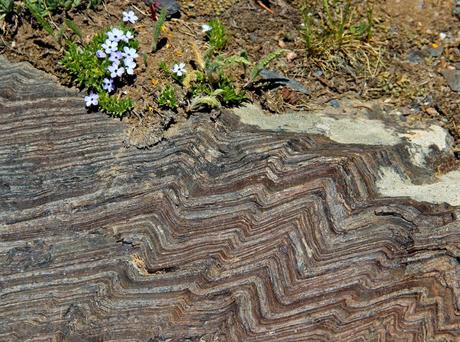
Crenulated beds (chevron folds) with alpine phlox.
Wyoming Highway 130 crosses the Medicine Bow Mountains west of Laramie. Immediately beyond the turnoff to Brooklyn Lake are some low dull-brown slopes that I’ve ignored for 30+ years. Foolish me.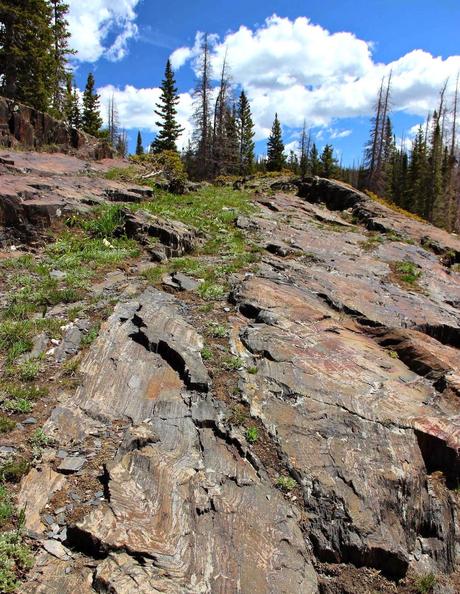
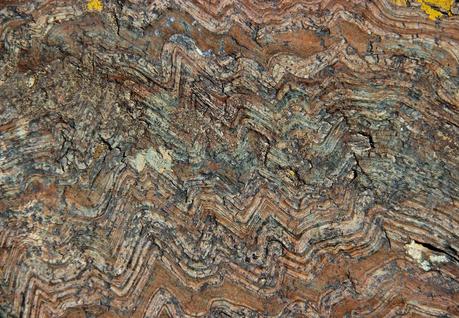
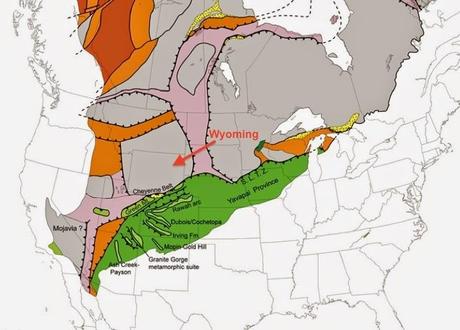
The green Yavapai province, a collection of oceanic arc terranes, was sutured to the south coast of North America along the Cheyenne Belt in what is now southern Wyoming (click on image to view; arrow added). Modified from Whitmeyer and Karlstrom (2011).
The deformed slate seemed quite durable. I couldn’t find any small fragments to take home, and cracks and soil pockets for plants were few.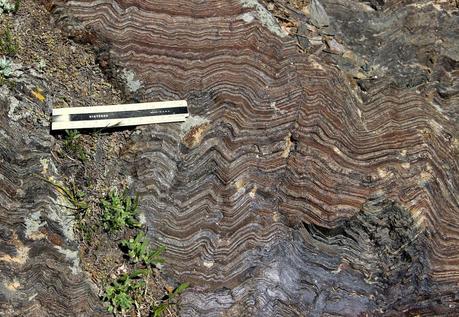
Requisite ruler for scale (6 in, 12 cm).
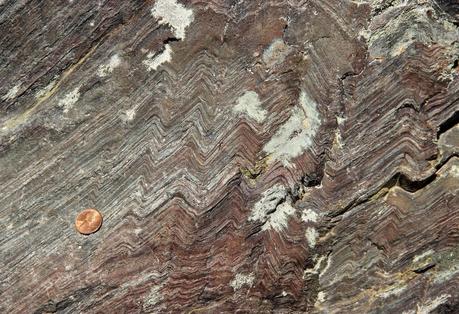
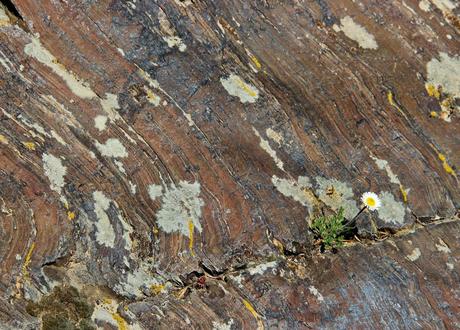
Fernleaf daisy in a narrow shallow fracture.
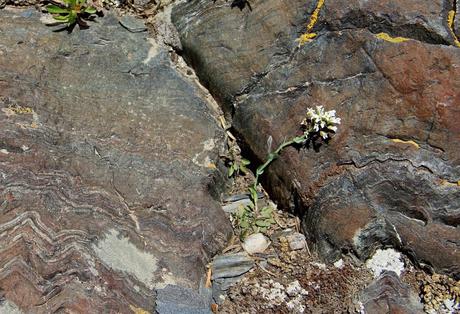
Mountain candytuff in a small soil pocket.
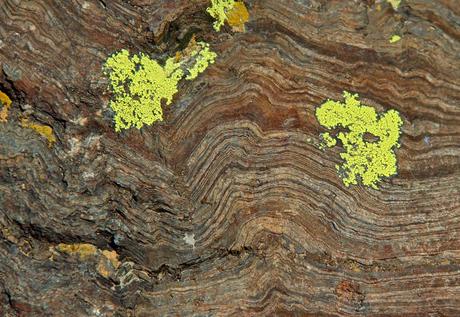
Lichen grow on the rock surface, over fine-scale folds.
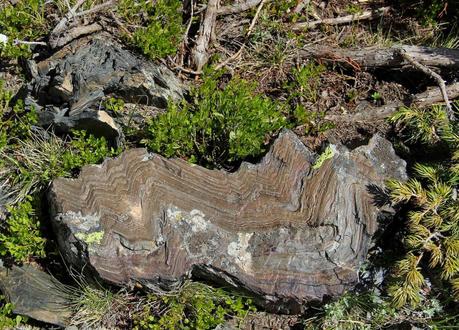
Grouse whortleberry and common juniper (lower right) surround a small outcrop of deformed slate.
The French slate is thought to have started as fine sediments deposited in deep ocean waters off the southern coast of North America (Lanthier 1979). Then along came the colliding oceanic arc terranes, and the ocean was squeezed out of existence. We say "collision" but it was hardly a single dramatic event. Whitmeyer and Karlstrom estimate it took place 1.76 to 1.72 billion years ago -- a period of 40 million years.It's so hard to grasp geologic time at these scales! The quartzite boulder below is much easier. It's an erratic left by a glacier 12-16 thousand years ago -- just recently. The glacier also polished the folded French slate, a nice touch.
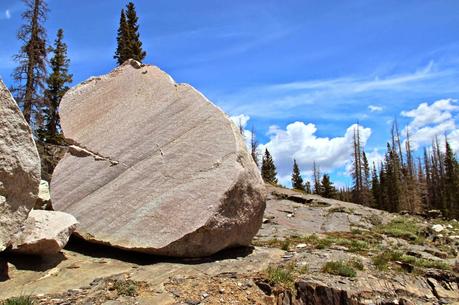
Glacial erratic made of Medicine Peak quartzite; it was carried down from the high Snowy Range to the west.
How to get thereFrom Wyoming Highway 130 roughly 7.5 miles northwest of Centennial, turn north (right) on the road to Brooklyn Lake. Almost immediately turn left into the Nash Fork Campground if it’s open (recently it hasn't been) or park nearby. From the bulletin board/restroom area near the entrance, walk 20 to 30 yards west to the brown outcrops just above the highway. The folds are obvious.
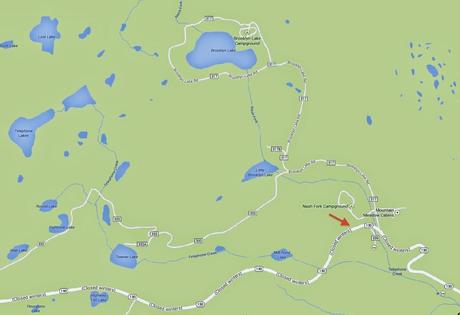
From Google Maps. Arrow shows location of outcrops.
Sources
Hausel, WD. 1993. Guide to the geology, mining districts and ghost towns of the Medicine Bow Mountains and Snowy Range Scenic Byway. Geol Surv WY Public Info Circ 32.
Lanthier, R. 1979. Stratigraphy and structure of the lower part of the Precambrian Libby Creek Group, central Medicine Bow Mountains, Wyoming. Contrib to Geology, Univ Wyoming 17:135-147.
Whitmeyer, SJ and Karlstrom, KE. 2011. Tectonic model for the Proterozoic growth of North America. Geosphere 3:220-259.
